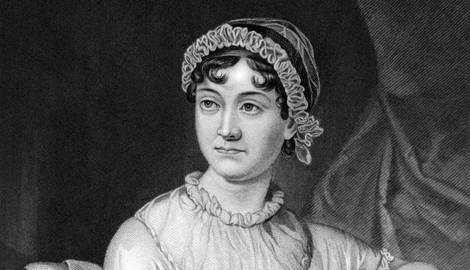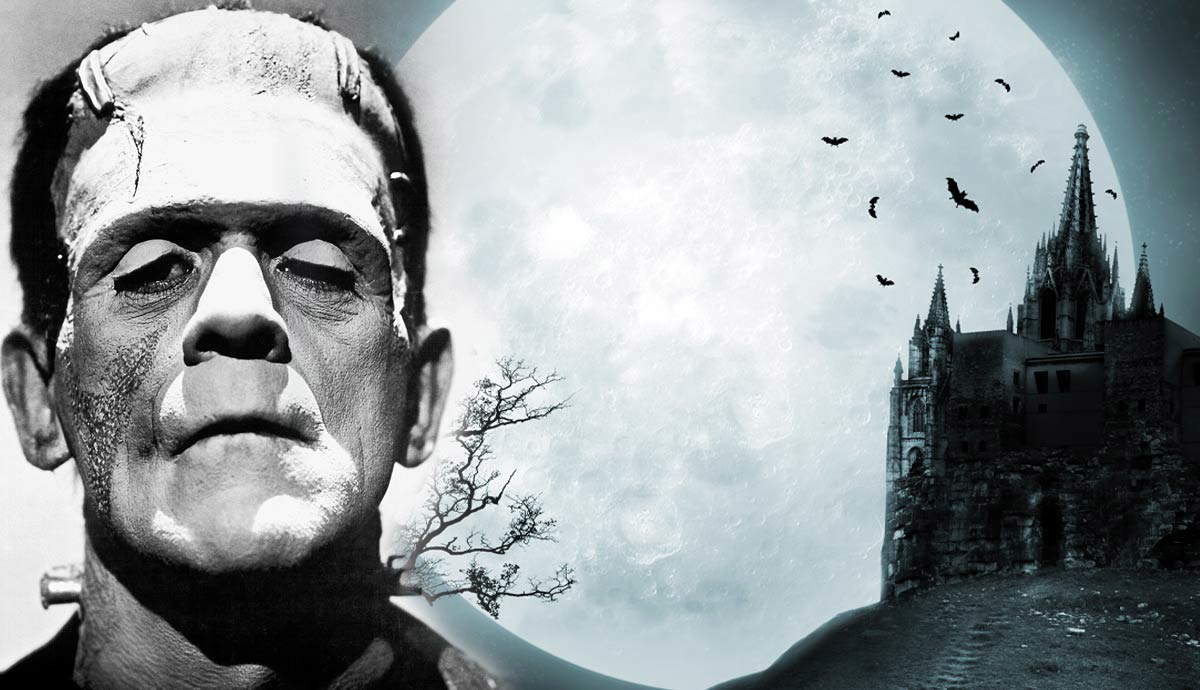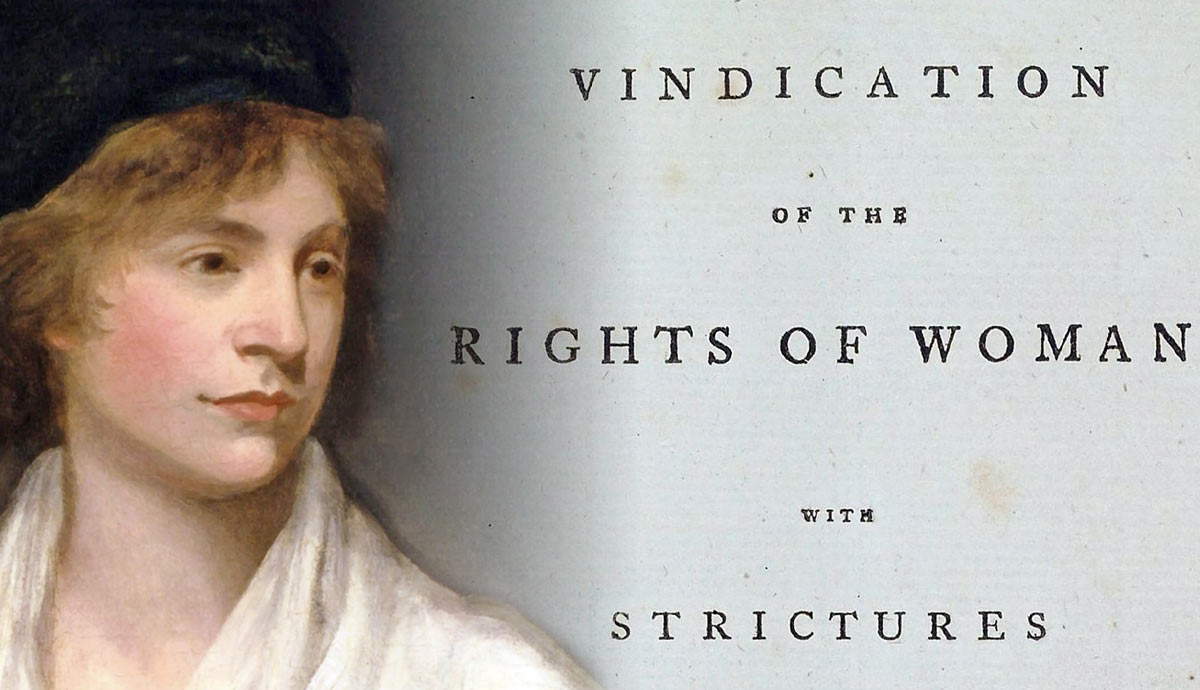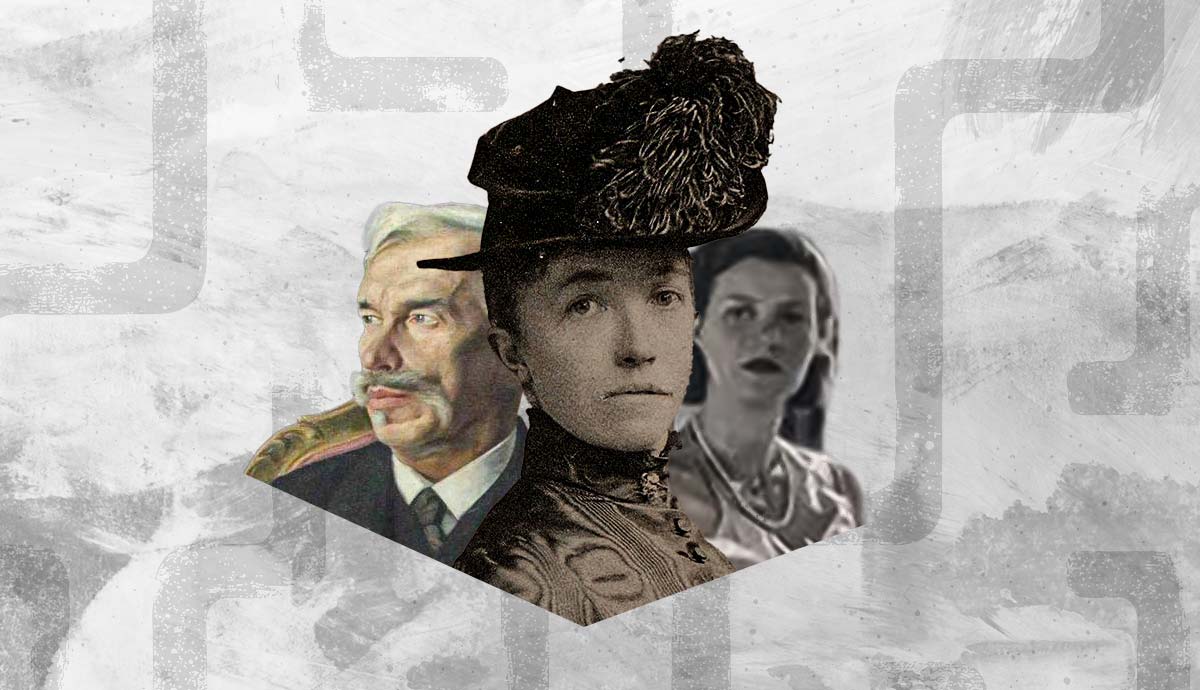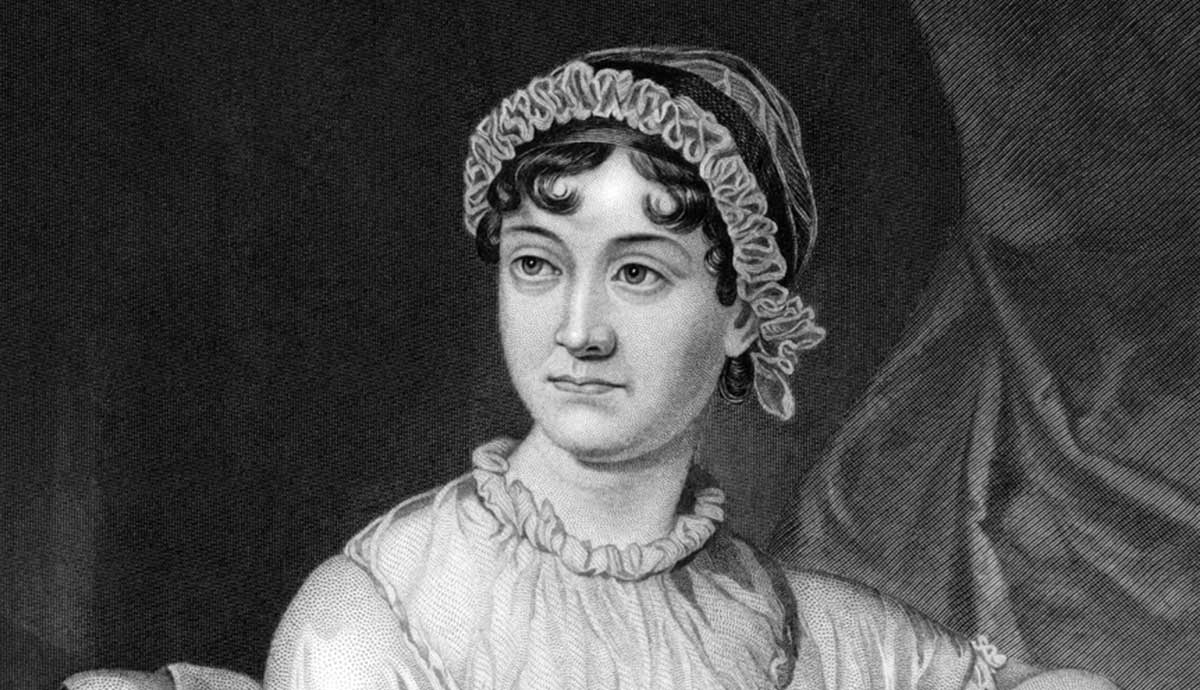
Over 200 years after her death, Jane Austen’s novels continue to resonate. According to the popular image of Austen, this is thanks to her talent for portraying a cozy bygone English society in which the worst thing that might happen to someone is catching a cold. Her novels are the ancestors of today’s historical romance fiction, with their emphasis on the contrasting characters of their protagonists and the twists and turns in their path to love. Only taking the popular image of Austen into account, though, overlooks how her writing could also be full of wit, irony, and scathing critique.
1. Pride and Prejudice: The Opening Line

Quote: “It is a truth universally acknowledged, that a single man in possession of a good fortune must be in want of a wife.” (Pride and Prejudice, p. 1)
One of the best-known opening lines not only in Jane Austen‘s oeuvre but in all of literature, the first sentence of Pride and Prejudice has justly become famous for being characteristic of the author’s ability to distil the entire world of a novel into one tantalizing line, dripping with irony. The drama of Pride and Prejudice, and all of Austen’s work, revolves around this “universal” acknowledgement that the marriage market of the late 18th century was a very important thing indeed.
By prompting our agreement from the very first words, encouraging us to think of universal truths, Austen draws us into the world of Pride and Prejudice, with its brood of Bennet sisters—the five unmarried daughters of a mother desperate to gain social and material advantage by finding them suitable husbands.
Despite the charm of the Bennet sisters, it is the novel’s male protagonist, Fitzwilliam Darcy, on whom the opening line focuses our attention. He is the “single man in possession of a good fortune” (an extremely good one, in fact).
Yet the novel’s drama comes from the question of whether such a wealthy man could “want” anything—as the title suggests, he comes across as proud and condescending, judging others and finding them insufficient. His journey in the novel is to realize that he is, in fact, “in want of a wife,” if he will only relinquish his pride and recognize that Elizabeth Bennet—the heroine who has to relinquish her prejudice against him—is worthy of him.
2. Northanger Abbey: A Defense of Novels

Quote: “Although our productions have afforded more extensive and unaffected pleasure than those of any other literary corporation in the world, no species of composition has been so much decried. From pride, ignorance, or fashion, our foes are almost as many as our readers. And while the abilities of the nine-hundredth abridger of the History of England, or of the man who collects and publishes in a volume some dozen lines of Milton, Pope, and Prior, with a paper from the Spectator, and a chapter from Sterne, are eulogized by a thousand pens—there seems almost a general wish of decrying the capacity and undervaluing the labour of the novelist, and of slighting the performances which have only genius, wit, and taste to recommend them.” (Northanger Abbey, chapter 5)
It is strange to think of today, with a Western canon full of novels which have been celebrated for generations as important contributions to humanity and esteemed works of art, but in Austen’s day, the novel was not considered a vehicle for serious thought or admirable art. Still a relatively new form in the late 18th century, in comparison to the longstanding and more esteemed form of poetry, the novel, for many people, was considered frivolous, escapist, and merely fashionable—something which might turn out to be a flash in the pan.

Part of the reason for this condescension was the large proportion of women who read—and wrote—novels. The traditional narrative of the development of English literature might give the impression that there were very few female novelists in the 18th century, but this is not the case: it is just that the male novelists went down in history. Genre fiction, such as Gothic novels and sentimental or romantic novels, was highly popular with female readers and was often produced by female authors as well.
Austen subtly hints at this prejudice in this quote from Northanger Abbey, when she implies that no one has a problem with reading as long as the material is serious stuff by John Milton, Alexander Pope, Matthew Prior, or the influential journal the Spectator. She goes on to imagine a female reader who is ashamed to be caught reading Cecilia, Camilla, or Belinda—novels by Austen’s fellow female author Maria Edgeworth—who might have been praised had she been reading the Spectator, even if the passage in question were not terribly interesting or edifying.
This defense of novels is presented with characteristic understatement by Austen. “Why are novels so undervalued?” she asks. All they have to recommend them is “genius, wit, and taste”—not much, then.

Her argument is especially important in the context of Northanger Abbey, the first novel Austen completed, and one that, like her second novel, Sense and Sensibility, takes for its heroine a young woman who is a big reader.
Catherine Morland, the heroine of Northanger Abbey, appears to get into trouble because she likes novels too much: Gothic novels, in particular, which make her imagine that Northanger Abbey must be an old, haunted ruin, and old Mr. Tilney, her host, must have had some nefarious involvement in his wife’s death.
Catherine’s fiction-fueled imagination earns her a telling-off from Henry Tilney, her love interest, and yet she turns out to have not been entirely mistaken. Mr. Tilney Sr. may not be a Gothic villain, but he does act unkindly to those around him, pulling the wool over his son’s eyes. Austen’s message: Gothic novels may be a warped, sentimentalized reflection of real life, but that does not mean that novels have nothing to teach us.
3. Emma: A Tale in Miniature

Quote: “The charming Augusta Hawkins, in addition to all the usual advantages of perfect beauty and merit, was in possession of an independent fortune, of so many thousands as would always be called ten; a point of some dignity, as well as some convenience: the story told well; [Mr. Elton] had not thrown himself away—he had gained a woman of 10,000 l. or thereabouts; and he had gained her with such delightful rapidity—the first hour of introduction had been so very soon followed by distinguishing notice; the history which he had to give Mrs. Cole of the rise and progress of the affair was so glorious—the steps so quick, from the accidental rencontre, to the dinner at Mr. Green’s, and the party at Mrs. Brown’s—smiles and blushes rising in importance—with consciousness and agitation richly scattered—the lady had been so easily impressed—so sweetly disposed—had in short, to use a most intelligible phrase, been so very ready to have him, that vanity and prudence were equally contented.” (Emma, volume 2, chapter 4)
Emma could be called Austen’s funniest novel for a number of reasons: the comic characters of Mr. Woodhouse, Miss Bates, and Mrs. Elton; its farcical, constantly changing love triangles; the gap in perspective between the wry narrator and the meddlesome but well-meaning protagonist.
This passage shows Austen’s talent for light comic touches and for condensing an entire narrative into a few choice sentences. Since Augusta Hawkins—soon to be Mrs. Elton—and her suitor are minor characters compared to Emma herself, Austen dispatches the tale of their meeting and engagement hastily, all the while hinting to the reader that these are not characters we ought to think very highly of.

There are suggestions throughout the passage that Mr. Elton has married Miss Hawkins primarily for social status: see the dismissive line, “the story told well.” Estimating her fortune as “so many thousands as would always be called ten” is a classic piece of Austen wit and verbal economy, distilling people’s gossipy tendencies to speculate about just how much money a prospective suitor might bring to a marriage, and leaving us just enough space to surmise that, perhaps, Miss Hawkins is rounding up.
The “delightful rapidity” of their courtship is echoed in Austen’s short phrases, which tell the tale, each phrase further undermining our sense of anything truly “delightful” having taken place. Already suspecting that Mr. Elton’s motivations are somewhat mercenary, we then get impersonal suggestions about “smiles and blushes” before finding out that Miss Hawkins was “so easily impressed” and “so very ready to have him.” Mr. Elton, who has so far been a comic, if slightly sneering character, is almost completely brought down to size by these few phrases.
For the final blow, Austen tells us that the characters’ “vanity and prudence were equally contented” by the prospect of getting engaged. There we have it, in just a few sentences: he was drawn to her money, she was easily flattered, and the match is ideal because they’re both vain. Austen spent entire novels telling similar stories in meticulous detail, but here she shows a deft ability to tell stories in miniature with devastatingly cutting effect.
4. Persuasion: Captain Wentworth’s Confession

Quote: “I can listen no longer in silence. I must speak to you by such means as are within my reach. You pierce my soul. I am half agony, half hope. Tell me not that I am too late, that such precious feelings are gone for ever. I offer myself to you again with a heart even more your own than when you almost broke it, eight years and a half ago. Dare not say that man forgets sooner than woman, that his love has an earlier death. I have loved none but you. Unjust I may have been, weak and resentful I have been, but never inconstant.” (Persuasion, chapter 23)
Austen is celebrated for the eloquence with which her heroes confess their love to her heroines: whether it be Mr. Darcy telling Elizabeth Bennet, “In vain have I struggled. It will not do. My feelings will not be repressed. You must allow me to tell you how ardently I admire and love you,” or Mr. Knightley telling Emma, “If I loved you less, I might be able to talk about it more.”
The confession in Persuasion, though, is perhaps Austen’s best. Unusually for an Austen novel, Captain Wentworth and Anne Elliot have already had their romance, just over eight years before the novel begins. On the advice of a family friend who is looking out for her social prospects, the young Anne breaks off their engagement, and Wentworth goes to sea with the navy.

Persuasion opens with an older, more mature Anne, who believes she is unlikely to find a match like Wentworth again—one based on true love, and not material advantage. When Wentworth unexpectedly comes back into her life, they are hesitant, unsure of each other, and whether they can—or should—start over again.
Wentworth makes his confession, again unusually for an Austen novel, in a letter rather than face to face. But this is no cop-out: Austen’s scene is brilliantly arranged to heighten the sense of the couple’s longing for each other right until the very end. Anne is, in fact, in the room while Wentworth writes his letter. She believes he is writing to his friend, Captain Berwick, and is not listening to the conversation she is having with another friend, Captain Harville.
Anne does not know, until she unexpectedly receives Wentworth’s letter, that he has actually listened to every word of her conversation with Harville (ostensibly hypothetical, but with lots of underlying significance) about the relative loyalty of men and women.
Anne’s insistence that women never really forget the men they love turns out to have been a pivotal moment, indirectly proving to Wentworth that she has never stopped loving him and prompting him to declare the same for himself in his letter. It may not be a dramatic love confession, but it is the perfect climax to a novel which is all about the stirring of deeply felt, long-nurtured yearning.
5. Persuasion: Telling Women’s Stories

Quote: “Men have had every advantage of us in telling their own story. Education has been theirs in so much higher a degree; the pen has been in their hands. I will not allow books to prove anything.” (Persuasion, chapter 23)
In the same scene as the above, while Wentworth secretly writes his letter of declaration to Anne, she and Captain Harville have one of the novel’s many conversations about literature. Although the discussion is mainly important because it leads towards their comparison of the constancy of men and women, at which point Wentworth realizes Anne has not stopped loving him, the scene also contains Austen’s strongest statement about women’s writing.
Harville proposes an analogy between men’s physical strength and their emotional robustness, arguing that men’s feelings can “bear most rough usage” and “ride out heavy weather.” Anne disagrees, while taking up his analogy and maintaining the essential difference between the sexes: women may be less robust, but this makes their feelings more tender. Moreover, because they are not permitted to go out into the world and live the public lives of adventure and hardship which may make men forget their loves, women can nurture their feelings longer and more deeply.

This apparently idle talk in fact connects Austen’s novel, published in 1818, to contemporary philosophical debates about reason and emotion, and the relationship of these concepts to the body. Harville then appeals to literature to strengthen his argument: “all stories, prose and verse,” testify to women’s fickle nature. Anne responds that this is surely because these stories, on the whole, have been written by men. Moreover, these stories have been written by men because, for centuries, most women had no access to education.
Austen’s statement that “the pen has been in [men’s] hands” is far more overt than her defense of novels in Northanger Abbey, which merely hints at the fact that novels are disdained because they are written and read by women. In Persuasion, Austen anticipates parts of Virginia Woolf‘s argument in the essay A Room of One’s Own (1929), in which she writes that literary history has been skewed against women, as subjects and as authors, because only men have been allowed to write.
The few women who have managed to write, Woolf proposes, with reference to Austen as well as Aphra Behn, the Brontës, and George Eliot, have had to seize the privilege and have written with far less freedom than men. If their subject matter is more limited (as much criticism of women’s writing suggested), it is because their lives were, too, and because a bias towards men’s writing has led us to undervalue literature which, like Austen’s, specializes in “the observation of character” and “the analysis of emotion” (Woolf, 1929, p. 100).
6. Austen’s Allegory for Her Art

Quote: “What should I do with your strong, manly, spirited Sketches, full of variety and Glow? – How could I possibly join them on to the little bit (two inches wide) of Ivory on which I work with so fine a Brush, as produces little effect after much Labour?” (Jane Austen, letter to James Edward Austen-Leigh)
In A Room of One’s Own, Woolf refers to the popular belief that Austen did all her writing covertly, in the company of friends and family, lacking that crucial privilege in Woolf’s title, a separate study in which to work. According to this belief, popularized by Austen’s nephew, James Edward Austen-Leigh, Austen would even hide her manuscripts if there was any chance of her companions spotting them. Woolf is puzzled: is Pride and Prejudice something to be ashamed of? It is only, as the narrator of Northanger Abbey might put it, a performance which has “genius, wit, and taste to recommend” it.
A now-infamous passage in a letter from Austen to her nephew captures the same question about how Austen herself evaluated her work. Referring to Austen-Leigh’s own attempts at writing novels, Austen makes what seems, at first glance, to be an invidious comparison. His are “strong, manly, spirited Sketches,” while her own writing is like a tiny watercolor painting, so small that the hard work which has gone into it is barely even visible. Is this a rueful admission that her novels are (as her detractors would have it) lacking in depth and scope?

It is worth remembering Austen’s gift for irony, and the possibility that her tone here may be tongue-in-cheek. There is a hint of teasing in her calling Austen-Leigh’s writing “manly,” which might allude to her keen consciousness that different expectations were placed on male and female authors.
If her writing is as narrow as the two-inch-wide piece of ivory in her watercolor allegory, this is because (as Woolf would argue 100 years later) she only wrote about what she had direct experience of. However, this is no reason to discredit what she did write: as Woolf says, “her gift and her circumstances matched each other completely” (Woolf, 1929, p. 102).

For novels about the observation of character and analysis of social relations, there is no one quite like Austen. She is not undervaluing herself when she compares her work to the painter of miniature watercolors; she is acknowledging the delicate labor needed to make art on this two-inch-wide piece of ivory.
The analogy suits Austen’s view of the sexes expressed in Persuasion. She did not advance the progressive idea that women might be able to accomplish (in literature or any other sphere) what men can. However, she argued that we ought to reconsider how we evaluate women’s accomplishments.
Female authors may be limited to drawing-room observations, but the problem is that drawing-room observations are undervalued by the public at large. As her letter to her nephew suggests, Austen did not want to excel in writing “strong, many, spirited Sketches, full of variety and Glow.” Her work might seem narrow in scope, but the brilliance is all in the details.
Bibliography
Austen, Jane (1994). Emma. Project Gutenberg edition.
Austen, J. (1994). Northanger Abbey. Project Gutenberg edition.
Austen, J. (1994). Persuasion. Project Gutenberg edition.
Austen, J. (1998). Pride and Prejudice. Project Gutenberg edition.
Woolf, V. (1929). A Room of One’s Own. London: Hogarth Press.
